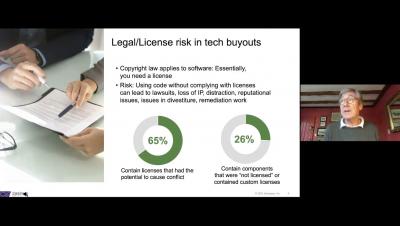Security | Threat Detection | Cyberattacks | DevSecOps | Compliance
November 2021
Effective software security activities for managing supply chain risks
BSIMM12 reports increased attention on software security due to recent supply chain disruptions. Get recommendations for managing supply chain risks. As the global pandemic disrupted the way business is conducted, the workforce became more dispersed and moved far from the traditional secure enterprise environments.
Don't let Trojan Source sneak into your code
Protect your organization from the Trojan Source exploit with fast and trusted vulnerability detection from Rapid Scan Static. As everyone in the industry knows, all software vulnerabilities are not equal—some are trivial, some are irrelevant, and some are severe. Obviously, you should focus your attention on those that are characterized as severe. The recently published Trojan Source (CVE 2021-42574) vulnerability falls into the severe category—meaning you should give it full attention.
Build Trust In Your Software | Synopsys
A stitch in BIND saves nine
A vulnerability was discovered in the named DNS server implementation contained in the development branch builds of BIND 9. This is a story of catastrophe averted. It’s a case study for the value of fuzzing in software development. Synopsys Cybersecurity Research Center (CyRC) researchers discovered a denial-of-service vulnerability in development branch builds of BIND 9 by Internet Systems Consortium (ISC).
Software risks in private equity buyouts | Synopsys
Build Trust In Your Software | Synopsys
Learn more about Synopsys Software Integrity: https://www.synopsys.com/software-integrity.html
Subscribe: https://www.youtube.com/synopsys
Follow Synopsys on Twitter: https://twitter.com/sw_integrity
Top seven logging and monitoring best practices
Need to build a logging and monitoring solution and unsure where to begin? Get started with our logging and monitoring best practices guide. By: Nivedita Murthy, senior security consultant, and Ashutosh Rana, senior security consultant, at Synopsys.







